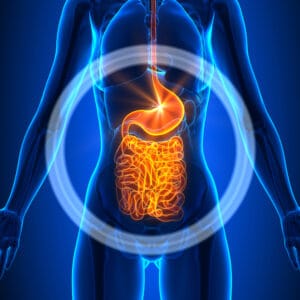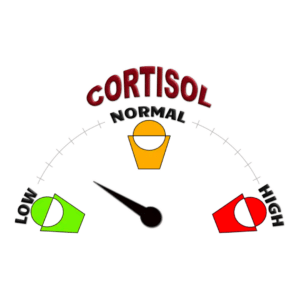Most people are familiar with probiotics and their health benefits. Nowadays, they can be found in many supermarkets and most health stores. Of the probiotic species, the most well-known, Lactobacillus and Bifidobacteria, can also be found in fermented foods such as kefir, kombucha and tempeh. Lately, however, Akkermansia Muciniphilia (AK Muciniphilia), another microbe species, is fast becoming the focus of much new research and hailed as a marker for a happy gut.
what is AK Muciniphilia
AK Muciniphilia is a species of microbe that was first identified in 2004. It can be found in the mucous layer of the large intestine and uses mucin present in the intestinal mucous as its source of nitrogen, carbon and energy (1,2). It helps maintain the gut lining and has several health benefits, being more abundant in healthy people.
how does it work and why is it special?
The intestinal lining is covered in a mucous layer whose primary function is to allow beneficial substances to enter the body and prevent microbes, toxins and undigested foods from getting into it. This mucous layer is rich in mucin and forms a protective barrier (3). When AK Muciniphilia feeds on the mucin, it encourages surrounding cells to produce more mucous, thereby thickening the gut lining. High gut permeability is associated with Irritable Bowel Disease (IBD), obesity and leaky gut. When the intestinal lining thickens, its permeability is decreased, making it difficult for unwanted substances and microbes to enter the body (4). The result is less inflammation and greater intestinal immunity.
Unlike other microbes, AK Muciniphilia does not depend on the individual to feed it but thrives on mucin even if there are no available nutrients. It feeds on mucin and, whilst doing so, strengthens the gut barrier. When AK Muciniphilia breaks down the mucins, it turns them into short-chain fatty acids such as acetate, which gut cells thrive on (5,6). Certain beneficial bacteria use acetate to make butyrate, an essential energy source for the cells lining the gut.
AK Mucuiniphilia’s association with healthy individuals
According to certain studies, AK Muciniphilia is less abundant in individuals suffering from diabetes, obesity and hypertension, which is the opposite case with healthy, lean individuals (7).
A study conducted in 2017 looked at the impact of supplementation with AK Muciniphilia in a group of individuals for three months (7). These individuals tolerated the supplements well and had reduced biomarkers for liver dysfunction and inflammation, as well as reduced plasma cholesterol levels and improved insulin sensitivity.
Compared with healthy individuals, AK Muciniphilia is less abundant in patients with IBD. This suggests that its ability to regulate the intestinal mucosa might play an important protective role against intestinal damage.
To conclude, although the precise mechanisms through which AK Muciniphilia may be involved in protecting individuals against metabolic diseases is unknown, the fact that it is reduced in individuals with IBD, obesity and diabetes, and raised in healthy individuals, suggests it is a key player in encouraging microbial diversity and regulating the mucosal thickness. Further studies are needed on humans to unleash its true potential.
foods to boost levels of AK Muciniphilia
Individuals with less-than-ideal AK Muciniphilia levels can consult a health professional to discuss supplementation or boost levels through diet. Specifically, the foods to include are cranberries, grapes, black tea and walnuts. These foods contain polyphenols, which increase the abundance of AK Muciniphilia in the gut (8).
Sources:
- Naito, Y., Uchiyama, K. and Takagi, T. (2018). A next-generation beneficial microbe: Akkermansia muciniphila. Journal of Clinical Biochemistry and Nutrition, [online] 63(1), pp.33–35. doi:10.3164/jcbn.18-57.
- Derrien, M. (2004). Akkermansia muciniphila gen. nov., sp. nov., a human intestinal mucin-degrading bacterium. INTERNATIONAL JOURNAL OF SYSTEMATIC AND EVOLUTIONARY MICROBIOLOGY, 54(5), pp.1469–1476. doi:10.1099/ijs.0.02873-0.
- Hansson, G.C. (2012). Role of mucus layers in gut infection and inflammation. Current Opinion in Microbiology, [online] 15(1), pp.57–62. doi:10.1016/j.mib.2011.11.002.
- van der Lugt, B., van Beek, A.A., Aalvink, S., Meijer, B., Sovran, B., Vermeij, W.P., Brandt, R.M.C., de Vos, W.M., Savelkoul, H.F.J., Steegenga, W.T. and Belzer, C. (2019). Akkermansia muciniphila ameliorates the age-related decline in colonic mucus thickness and attenuates immune activation in accelerated aging Ercc1−/Δ7 mice. Immunity & Ageing, 16(1). doi:10.1186/s12979-019-0145-z.
- Lukovac, S., Belzer, C., Pellis, L., Keijser, B.J., de Vos, W.M., Montijn, R.C. and Roeselers, G. (2014). Differential Modulation by Akkermansia muciniphila and Faecalibacterium prausnitzii of Host Peripheral Lipid Metabolism and Histone Acetylation in Mouse Gut Organoids. mBio, 5(4). doi:10.1128/mbio.01438-14.
- Dao, M.C., Everard, A., Aron-Wisnewsky, J., Sokolovska, N., Prifti, E., Verger, E.O., Kayser, B.D., Levenez, F., Chilloux, J., Hoyles, L., Dumas, M.-E., Rizkalla, S.W., Doré, J., Cani, P.D. and Clément, K. (2015). Akkermansia muciniphilaand improved metabolic health during a dietary intervention in obesity: relationship with gut microbiome richness and ecology. Gut, 65(3), pp.426–436. doi:10.1136/gutjnl-2014-308778.
- Depommier, C., Everard, A., Druart, C., Plovier, H., Van Hul, M., Vieira-Silva, S., Falony, G., Raes, J., Maiter, D., Delzenne, N.M., de Barsy, M., Loumaye, A., Hermans, M.P., Thissen, J.-P., de Vos, W.M. and Cani, P.D. (2019). Supplementation with Akkermansia muciniphila in overweight and obese human volunteers: a proof-of-concept exploratory study. Nature Medicine, 25(7), pp.1096–1103. doi:10.1038/s41591-019-0495-2.
- Anhê, F.F., Roy, D., Pilon, G., Dudonné, S., Matamoros, S., Varin, T.V., Garofalo, C., Moine, Q., Desjardins, Y., Levy, E. and Marette, A. (2014). A polyphenol-rich cranberry extract protects from diet-induced obesity, insulin resistance and intestinal inflammation in association with increasedAkkermansiaspp. population in the gut microbiota of mice. Gut, 64(6), pp.872–883. doi:10.1136/gutjnl-2014-307142.








